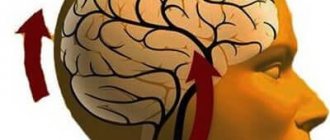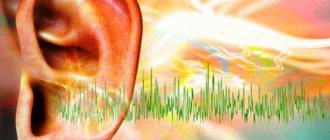An increased feeling of anxiety, the occurrence of panic attacks, a feeling of lack of oxygen - all these manifestations accompany vegetative-vascular dystonia. To relieve a number of unpleasant symptoms, experts actively prescribe Grandaxin for VSD, which has shown its effectiveness in solving problems accompanying autonomic disorders.
The benefits and harms of tranquilizers for VSD
Disorders of the central nervous system, expressed in disruption of the interaction of its sympathetic and parasympathetic departments, provoke anxiety states, obsessive fears and other symptoms of VSD. To get rid of them, specialists prescribe special drugs to their patients - tranquilizers, which are available only by prescription.
Self-medication is not an acceptable practice when using tranquilizers. An unbalanced dose of the drug can do much more harm than help a person.
Treatment with tranquilizers can improve a person’s quality of life, so the diagnosis of vascular dystonia often accompanies the prescription of the drug Grandaxin.
The benefits of tranquilizers are obvious:
- influence on mental disorders in order to relieve their manifestations;
- getting rid of neuroses, depression and high nervous excitability;
- elimination of other unpleasant symptoms of VSD;
- inclusion in the complex of drugs necessary for the treatment of dystonia.
These medications are not without some disadvantages:
- capable of causing a state of dependence on the active substance, which does not allow one to stop using it;
- a number of contraindications prevent continued treatment for a long time;
- are not suitable for use by all categories of people and have a number of limitations in use.
Only a specialist can decide on the need to treat vegetative-vascular dystonia using Grandaxin, having first assessed the patient’s health condition, whether he has indications and contraindications for its use.
Why is the drug effective for PA?
The main indications for taking Grandaxin are:
- neurotic states (intense psycho-emotional stress, autonomic disorders, anxiety, depression, various obsessions);
- reactive depression;
- post-traumatic stress disorder.
Each tablet of the drug contains 50 mg of tofisopam; It is this active substance that eliminates various unpleasant manifestations. The drug acts gently, but this does not affect its effectiveness in any way - Grandaxin copes well with feelings of anxiety, fatigue, and loss of strength. The drug has anticonvulsant and sedative effects, and therefore it successfully responds to panic attacks of mild or moderate severity. Patients note that after taking this medication, their performance increases, they gain energy, and their mood significantly improves. Many patients claim that the drug Grandaxin promotes the development of optimistic thinking. The patient’s quality of life becomes better, the overall mental state improves, due to which fears, depression and anxiety recede, and the number of panic attacks is significantly reduced.
What is Grandaxin
Grandaxin is a drug from a number of tranquilizers, the active ingredient of which is tofisopam. It is prescribed by a doctor if a person has dystonia, panic attacks, depression and neuroses. This drug is produced in the form of tablets containing 50 mg of tofisopam.
The drug is prescribed for vegetative disorders, it helps in the fight against the most unpleasant symptoms of VSD.
Vegetative-vascular pathology (provided that the medicine is accepted by the body of a particular person) can easily be treated with Grandaxin.
The peculiarity of a substance such as tofisopam is the mildness of its effect, which allows you to calmly tolerate both the beginning of its use and the time of withdrawal. Grandaxin has the ability to dissolve briefly in gastric juice, due to which it quickly enters the bloodstream (after 2 hours its concentration in the patient’s blood is at its maximum).
Grandaxin is prescribed for the treatment of vegetative-vascular dystonia because:
- the gentleness of its effect is associated with a great influence on vegetative manifestations;
- the drug does not cause attacks of drowsiness, but, at the same time, it perfectly fights fatigue, anxiety, improving mood and ability to work;
- the sedative effect of the drug on brain structures allows you to quickly get rid of all kinds of phobias, depressive moods and increased anxiety;
- the anticonvulsant effect of Grandaxin allows you to relieve panic attacks of moderate and mild severity;
- this medicine is used in people who have undergone a therapeutic course for VSD, in which case it aims to maintain the achieved results.
Despite a number of important advantages, this tranquilizer cannot always become a panacea in the treatment of dystonia. In advanced cases, in which a person is unable to leave the walls of his own home or experiences panic every day, Grandaxin may not give the expected effect.
The drug will not be able to overcome severe psychological stress, expressed in severe muscle tension and constant tremors of the limbs. Some patients report weight gain while using this drug, however, this fact has not been proven by clinical studies.
Advantages of the drug
Why is Grandaxin so often prescribed for VSD and panic attacks?
- Despite the gentle action, the tablets perfectly relieve any vegetative manifestations, forcing the patient to breathe freely and get back to doing his favorite things.
- The drug relieves feelings of anxiety and fatigue. It doesn't make you want to sleep, which is undoubtedly a plus. Many patients note how their performance and optimism greatly increase.
- In case of VSD, Grandaxin acts on the subcortical brain structures, reducing their activity - due to this, phobias, anxiety and depression no longer reduce the patient’s quality of life.
- Grandaxin eliminates panic attacks of mild and moderate intensity
It should be understood, however, that Grandaxin is a tranquilizer, which means that stories about magical cures will always have pitfalls.
Indications for use
The use of tranquilizers for VSD is a prerequisite for the full treatment of this pathological condition. When prescribing drugs of this kind, the doctor must take into account the indications and side effects that they may cause.
Indications for use of Grandaxin:
- disorders of the central nervous system, manifested by fears, obsessive phobias;
- high excitability and apathetic states, accompanied by a person’s indifferent attitude to life and lethargy;
- manifestations of depression, neurosis;
- atrophic processes occurring in the muscles;
- withdrawal (hangover) syndrome in people suffering from alcoholism;
- vegetative-vascular dystonia;
- chest pain, including those related to pathologies of the cardiovascular system;
- the presence of a heavy premenstrual period;
- increased sweating;
- menopause.
Drug treatment for panic attacks
Treatment of anxiety disorders is the task of a psychotherapist. To help the patient, you need to find the root of the problem, that is, the reason that triggered the appearance of panic attacks. Psychological problems play an important role: stress, complexes, unpleasant experiences, etc., therefore psychotherapy sessions are the foundation of treatment. The use of medications successfully complements them, especially in severe cases.
Worth seeing: Reviews of Phenibut for panic attacks
Only a qualified specialist can decide how to treat panic attacks and which pharmacological groups of drugs should be used. Amateur activities can lead to a deterioration in the general condition and dangerous side effects on the human body.
All medications used to treat panic attacks are divided into several groups:
- Remedies for relieving panic attacks that act with lightning speed. These are benzodiazepines, classified as tranquilizers. They show good results, but frequent use leads to addiction and side effects: lethargy, drowsiness, and decreased concentration. Therefore, it is advisable to use them only in extreme cases. These are tablets and injections containing diazepam, midazolam, temazepam.
- Other types of tranquilizers for the course of treatment;
- Antidepressants;
- Neuroleptics, which have a general calming effect on the body during a panic attack;
- Beta blockers that lower blood pressure and pulse. They, like benzodiazepines, are used for anxiety attacks.
- Nootropics, which include the well-known glycine. They usually play a supporting role in therapy because they normalize blood supply to nerve tissues, metabolism and oxygen saturation of cells. All this helps the brain work better.
You can fight panic attacks with antidepressants
Herbal-based sedatives are also used for panic attacks. These are tablets, syrups, mixtures and tinctures, which are sold in a wide range in pharmacies. Valerian, motherwort, and lemon balm reduce the level of anxiety. But their use is indicated either as an adjuvant in treatment with more serious medications, or in mild forms of psychological disorders.
Doses and duration of treatment
Taking tranquilizers is prescribed on an individual basis, in compliance with the instructions attached to them. Grandaxin is no exception.
The dosing rules for Grandaxin are as follows:
- the average dose of the drug involves taking 1 tablet 2 3 times a day (in some cases, it is recommended to take 2 tablets at once for 1 dose);
- no more than 500 mg of Grandaxin should enter the body per day;
- for older people, the daily dose should not exceed 200 mg;
- for people with renal failure, the medication dose of 500 mg per day is halved.
This medicine does not have a clear connection to the time of eating; it is enough to wash down the tablets with clean water.
During therapy with Grandaxin, you can drive a car or work in an industry that requires attention, because this drug is not capable of causing drowsiness.
This remedy does not accept one-time doses, as it can only cause harm to the body, and the therapeutic effect will not be achieved. The average course of treatment can last from 2 to 3 months. However, the doctor can change this scheme at his own discretion, based on the dynamics of improvements and the patient’s health status.
Grandaxin for hypertension reviews
Hello! I haven’t had any reviews about medicines for a very long time, and here I am. unfortunately, it's overdue.
I’m no longer sixteen (remember “Love and Doves”?), and not 30, but already 40, and even with a tail. But, as those around me say, I look much younger than my age, and until recently I felt pretty good. But still, the years take their toll and some problems arise.
I’ve had low blood pressure all my life, but about six months ago I had what might be called a hypertensive crisis. My blood pressure jumped sharply (150 to 100), I thought I was “throwing away my skates,” but everything turned out okay. About two months later it all happened again. And for the last month I just lived like hell, constantly high blood pressure, about 130-140 over 90, but I feel it, my head is like cast iron, my ears feel like hot cotton wool, headaches, irritability, in general, some kind of nightmare. I thought - that’s it, “hello, menopause!” I went to the gynecologist, donated blood for hormones - so far everything is almost normal. But still, the first “bells” are already there.
I won’t complain and rant for a long time, now I’ll keep it short and to the point.
Everything became clear in the office of a neurologist, who also turned out to be a chiropractor (and I didn’t even know this, this is what it means to not show up at the clinic for several years.). He questioned me for a long time, hit my arms and legs with a hammer, shook my head left and right, as if he was playing with a ball, and, in the end, set my vertebrae! Wow!
As it turned out, I have cervical osteochondrosis (and who doesn’t have it, haha), but it was very advanced, everything was pinched and pinched, terrible spasms of the neck muscles, deterioration of blood flow, etc. This most likely causes headaches and pressure surges. And mood swings, periodic irritability and nervousness - well, my friend, age-related changes in the body, we are slowly moving towards menopause, as they say.
Doctor’s prescriptions, we kill “two birds with one stone”, we help with osteochondrosis and the onset of menopause:
Grandaxin. According to the doctor, “to calm the nervous system a little, reduce irritability, tearfulness, etc..”
Phezam. Also, according to the doctor, “in order to nourish the brain.”
Physiotherapy: Darsonval on the collar area and massage it.
Today I’ll tell you about Grandaxin. I won’t write about the rest, because... This will be a repeat of today's review.
There are 60 tablets in a package. There are also 20, but I needed just 60 for the course of treatment:
The tablets themselves are small and can be swallowed without problems:
At first I was a little annoyed by the fact that it was a tranquilizer. But, after reading reviews on the Internet, I calmed down a little, since this tranquilizer is very light, and its effect is not accompanied by a strong sedative effect.
INDICATIONS FOR USE:
neuroses and neurosis-like states (conditions accompanied by emotional stress, vegetative disorders, moderate anxiety, apathy, decreased activity, obsessive experiences);
reactive depression with moderately severe psychopathological symptoms;
mental adjustment disorder (post-traumatic stress disorder);
menopausal syndrome (as an independent remedy, as well as in combination with hormonal drugs);
premenstrual tension syndrome;
cardialgia (as monotherapy or in combination with other drugs);
alcohol withdrawal syndrome;
myasthenia gravis, myopathies, neurogenic muscle atrophy and other pathological conditions with secondary neurotic symptoms in cases where anxiolytics with a pronounced muscle relaxant effect are contraindicated.
conditions accompanied by severe psychomotor agitation, aggressiveness or deep depression;
respiratory failure in the stage of decompensation; sleep apnea syndrome (history);
simultaneous use with tacrolimus, sirolimus, cyclosporine;
1st trimester of pregnancy; lactation period (breastfeeding);
hypersensitivity to the components of the drug or any other benzodiazepines.
headache; insomnia; increased irritability; psychomotor agitation; confusion; seizures in patients with epilepsy; decreased appetite; constipation; flatulence; nausea; dry mouth; skin itching; muscle tension; muscle pain.
I was prescribed to take Grandaxin 1 tablet 2 times a day, morning and afternoon. Just one package of 60 tablets was needed for the course of treatment.
The instructions do not say exactly how to take the drug, before, during or after meals. And if there is no such information, then, it seems, it is possible at any time. But, again, after looking on the Internet, reading reviews, as well as doctors’ recommendations, I began taking Grandaxin about 30 minutes after eating. I tried to drink it once before meals, but I had discomfort in my stomach, so half an hour after meals, in my opinion, is optimal.
My impressions and results.
Actually, I am a very impressionable and sensitive person by nature; I cannot, as they say, “spit and grind”; if there are any problems, I “chew” everything and beat myself up. So I myself have become much calmer, and I react to problems calmly, without “making a mountain out of a mountain.”
By the way, I didn’t have any lethargy or apathy, I didn’t become a “vegetable”, which is what I was afraid of, to be honest. There was simply no increased anxiety. Even for the sake of experiment, several times I forced myself to think about something that would have immediately ruined my mood before, for example, a hated mother-in-law, well, who knows, maybe you have disgusting neighbors, or nasty work colleagues. So I was thinking about unpleasant moments, about upcoming meetings that obviously wouldn’t bring me any positive emotions, but it didn’t make me angry or have any unpleasant feelings, I JUST THOUGHT AND THAT’S ALL. WITHOUT BEING UPset OR WORRYING! But, I repeat, I was not a stupid vegetable, far from it. You just become calmer and don’t overreact to everything. And this made me very happy.
I didn't experience any side effects at all. It's surprising, of course, but it's true.
There was no addiction to the drug either.
From all this I conclude that the drug was ideal for me personally.
Now I feel fine, my blood pressure is normal, and I don’t experience any sudden mood swings. And if something happens, I drink a mixture of tinctures - motherwort, peony, hawthorn.
Of course, this is not only the merit of Grandaxin, I also took the nootropic drug Fezam, did the Darsonvalization procedure and went for a massage of the collar area.
I give Grandaxin the highest rating.
I won't say that I RECOMMEND it or I DO NOT RECOMMEND it. This drug should only be prescribed by a doctor! Usually, when I was stressed, I drank tinctures, and sometimes I also took Novopassit, but it would never have occurred to me to just buy such a remedy myself, namely a tranquilizer. So - only as prescribed by a specialist!
By the way, Grandaxin is sold only with a doctor’s prescription, and at the very first pharmacy I went to, they asked me for a prescription! Honor and praise to such pharmacists!
Thank you for your attention to the review! Health to everyone!
| Search the forum |
| Advanced Search |
| Find all thank you messages |
| Search by diaries |
| Advanced Search |
| To the page. |
| Page 1 of 2 | 1 | 2 | > |
Male, 25 years old (after 2 days already 26), height 181 cm, weight 65 kg.
I don’t smoke, I drink alcohol occasionally and in moderation. The level of physical activity is low (now I’m increasing it).
Problems with pressure surges. Blood pressure from 120/65 to 155/90.
The only hypertensive person in the family is my grandmother; her problems began after the birth of her 2nd child.
It all started on March 8th. We were at a holiday home and got poisoned with alcohol in a local bar. In the morning I felt terribly bad, at first I thought it was a hangover, but it didn’t go away for a very long time. I measured my blood pressure after returning home - my blood pressure was 150/90, I was shaking all over.
Before March 8th, for several weeks I felt unwell in the evenings - fatigue, dizziness, states of derealization. I didn’t measure my blood pressure then—I chalked it up to stress and fatigue.
In the week from March 8th (how it all started) I lost 5 kg of weight, and over the next month another 3 kg. There was absolutely no appetite. Now I have returned 1 kg.
The pressure did not subside for 5 days. The first 3 days I had problems with urination - I almost couldn’t go to the toilet. I thought it was acute renal failure (hypochondriacal disorder). With difficulty I went to the clinic and received a set of referrals for examinations and to specialists.
After 5 days, as prescribed by the therapist, I started taking Grandaxin and Coronal. After the first tablet of Grandaxin, the pressure subsided. Next, Grandaxin was prescribed by a neurologist.
Passed specialists: therapist, ophthalmologist, neurologist, endocrinologist, hematologist.
Examinations: Fluorography, ultrasound of the abdominal organs and subclavian lymph nodes, ultrasound of the kidneys, ECG, FVD, ECHO of the heart, EEG, M-ECHO, MRI of the head, MRI of the intracranial vessels, CT scan of the kidneys and adrenal glands.
The therapist prescribed urine and blood tests and an ECG, then an ultrasound of the kidneys and adrenal glands, a consultation with a neurologist, endokinologist, and hematologist. The neurologist prescribed a consultation with an ophthalmologist, an EEG, and an echoencephalogram. The endocrinologist prescribed a daily cortisol test, CT scan of the kidneys and adrenal glands, and ACTH. Ophthalmologist - the fundus is normal, vision has not changed over the past 3 years. The hematologist prescribed FVD, Fluarography, ultrasound of the abdominal organs + subclavian lymph nodes (felt a lump).
Results: Fluarography - normal Ultrasound of the kidneys and adrenal glands - normal Ultrasound of the abdominal organs - inflection of the gallbladder Ultrasound of the lymph nodes - normal ECG - normal Blood test - [ Links are available only to registered users ] and [ Links are available to registered users only ] (later was repeated, the difference is that cortisol returned to normal and hemoglobin was already 161, the rest remained unchanged). Urinalysis - normal Daily urine for Cortisol - 1241.92 mcg/day (at normal 380 - 940) ACTH - 27.8 (at normal 7.2-63.3, under stress up to 100) ECHO of the heart - changes ([ Links are available only to registered users ]) CT kidneys and adrenal glands - everything is normal FVD - everything is normal EEG - large changes ([ Links are available only to registered users ]) M-ECHO - everything is normal
Diagnoses and results: The therapist diagnosed Arterial Hypertension of the 1st degree, prescribed Concor 2.5 mg per day. The neurologist is a complex diagnosis, but the essence came down to VSD of the hypertensive type, prescribed Phenibut for 3 weeks, 1 tablet 3 times a day, Grandaxin for 3 months, 1 tablet 2 times a day, Nervohel in stressful situations and redo the EEG after 4 month. Endocrinologist - redo the Cortisol test in 4 months.
Now I take: Grandaxin, Phenibut, Mexidol, Magnerot and Motherwort Magne B6. For some time I took Coronal 1.25-2.5 mg per day, but stopped. I don’t take blood pressure pills yet - I don’t want to spoil the picture of the research.
Among the emergency ones: Anaprilin and Capoten (I try to avoid).
I measure my blood pressure in the morning and evening. In the morning, it usually does not exceed 130/80, in the evening it is more difficult, usually around 135-140/75-80 (I measure it with an Omron M2 electronic tonometer). There are surges (like yesterday) up to 150-155/85-90. Outbursts occur on average once every 2 weeks.
During the day, I sometimes measure it with a wristband tonometer. The readings are different, but if the pressure is 150, then he is not lying, if it is less than 140, then his readings fluctuate.
Increased heart rate. In the morning about 70-75, in the afternoon at rest 85-90, under light loads or in stressful situations 100-105. We get excited easily. After stress, problems with blood pressure usually begin. According to the subjective feeling, the heart does not beat, but makes strong contractions.
There were PAs. The pressure reached 160/90. Everything was shaking, there was a feeling of anxiety and fear. The PAs were even though I was taking Coronal. The last PA passed in 20 minutes, I felt it, got into the car while I was able, and drove home. At home my blood pressure was 128/80. PAs are not frequent, during these 3 months there were 3.
After everything settled down a bit, I started running. Physical fitness was at zero. I started with 3 minutes of continuous running, now I run for 15 minutes. I run every other day. When there is a big rise in blood pressure, I skip running. Blood pressure and pulse 15-20 minutes after a run are usually around 130/80/95.
I live in a number of stressful situations: personal life, family and work.
I've been having trouble sleeping for the past few months.
Now the question is: what do I need to further examine and in which direction should I dig? After all, primary hypertension at 25-26 years old, as I understand it, does not happen often and I really don’t want to poison myself with chemistry, what if there are other ways?
In this article you can read the instructions for use of the drug Grandaxin. Reviews of site visitors - consumers of this medicine, as well as the opinions of specialist doctors on the use of Grandaxin in their practice are presented. We kindly ask you to actively add your reviews about the drug: whether the medicine helped or did not help get rid of the disease, what complications and side effects were observed, perhaps not stated by the manufacturer in the annotation. Analogues of Grandaxin in the presence of existing structural analogues. Use for the treatment of neuroses, stress and menopause in adults, children, as well as during pregnancy and breastfeeding.
Grandaxin is a tranquilizer. A drug from the group of benzodiazepine derivatives (atypical benzodiazepine derivative). It has an anxiolytic effect, not accompanied by a sedative, muscle relaxant, or anticonvulsant effect. It is a psycho-vegetative regulator, eliminates various forms of autonomic disorders. Has moderate stimulating activity.
Due to the lack of a muscle relaxant effect, the drug can be used in patients with myopathy and myasthenia.
Due to the atypical chemical structure, unlike classical benzodiazepine derivatives, Grandaxin in therapeutic doses does not potentiate the effect of alcohol and practically does not cause the development of physical, mental dependence and withdrawal syndrome.
Grandaxin is a daytime tranquilizer.
Pharmacokinetics
After oral administration, it is quickly and almost completely absorbed from the gastrointestinal tract. Tofizopam (the active substance of the drug Grandaxin) does not accumulate in the body. It is excreted mainly in the urine (60-80%) in the form of conjugates with glucuronic acid and to a lesser extent (about 30%) in feces.
Indications
- neuroses and neurosis-like states (conditions accompanied by emotional stress, vegetative disorders, moderate anxiety, apathy, decreased activity, obsessive experiences);
- reactive depression with moderately severe psychopathological symptoms;
- mental adjustment disorder (post-traumatic stress disorder);
- menopausal syndrome (as an independent remedy, as well as in combination with hormonal drugs);
- premenstrual tension syndrome;
- cardialgia (as monotherapy or in combination with other drugs);
- alcohol withdrawal syndrome;
- myasthenia gravis, myopathies, neurogenic muscle atrophy and other pathological conditions with secondary neurotic symptoms in cases where anxiolytics with a pronounced muscle relaxant effect are contraindicated.
Release forms
Instructions for use and dosage regimen
They are set individually, taking into account the patient’s condition, the clinical form of the disease and individual sensitivity to the drug.
Adults are prescribed 50-100 mg (1-2 tablets) 1-3 times a day. For irregular use, you can take 1-2 tablets. The maximum daily dose is 300 mg.
For elderly patients and patients with renal failure, the daily dose is reduced by approximately 2 times.
Side effect
- headache;
- insomnia;
- increased irritability;
- psychomotor agitation;
- confusion;
- seizures in patients with epilepsy;
- decreased appetite;
- constipation;
- flatulence;
- nausea;
- dry mouth;
- skin itching;
- muscle tension;
- muscle pain.
Contraindications
- conditions accompanied by severe psychomotor agitation, aggressiveness or deep depression;
- respiratory failure in the stage of decompensation;
- sleep apnea syndrome (history);
- simultaneous use with tacrolimus, sirolimus, cyclosporine;
- 1st trimester of pregnancy;
- lactation period (breastfeeding);
- hypersensitivity to the components of the drug or any other benzodiazepines.
Use during pregnancy and breastfeeding
Grandaxin is contraindicated for use in the 1st trimester of pregnancy and during lactation (breastfeeding).
special instructions
It should be taken into account that in patients with mental retardation, elderly patients, and in patients with impaired renal and/or liver function, side effects may be observed more often than in other patients.
It is not recommended to use tofisopam for chronic psychosis, phobias or obsessive disorders. In these cases, the risk of suicide attempts and aggressive behavior increases. Therefore, Grandaxin is not recommended as monotherapy for depression or depression accompanied by anxiety.
Caution is required when treating patients with depersonalization, as well as with organic brain damage (for example, with atherosclerosis).
In patients with epilepsy, tofisopam may increase the seizure threshold.
Each Grandaxin tablet contains 92 mg of lactose, which should be taken into account in patients with lactose intolerance.
Impact on the ability to drive vehicles and operate machinery
Grandaxin does not significantly reduce attention and the ability to concentrate.
Drug interactions
The simultaneous use of tacrolimus, sirolimus, cyclosporine and Grandaxin is contraindicated. Plasma concentrations of drugs that are metabolized by the CYP3A4 isoenzyme may increase when taken concomitantly with tofisopam.
The use of Grandaxin with drugs that suppress the functions of the central nervous system (analgesics, general anesthesia, antidepressants, histamine H1 receptor blockers, sedatives, hypnotics, antipsychotic drugs) enhances their effects (for example, sedation or respiratory depression).
Inducers of liver enzymes (ethanol, nicotine, barbiturates, antiepileptic drugs) can increase the metabolism of tofisopam, which can lead to a decrease in its concentration in the blood plasma and a weakening of the therapeutic effect.
Some antifungal drugs (ketoconazole, itraconazole) can slow down the hepatic metabolism of tofisopam, which leads to an increase in its concentration in the blood plasma.
Some antihypertensive drugs (clonidine, calcium channel blockers) may enhance the effects of Grandaxin.
Beta blockers may slow the metabolism of tofisopam, but this effect is not clinically significant.
Tofisopam, when used concomitantly, can increase the level of digoxin in the blood plasma.
Benzodiazepines, incl. Grandaxin may affect the anticoagulant effect of warfarin.
Long-term concomitant use of disulfiram may inhibit the metabolism of tofisopam.
Antacids may affect the absorption of tofisopam.
Cimetidine and omeprazole, when used simultaneously, inhibit the metabolism of tofisopam.
Oral contraceptives may reduce the rate of metabolism of Grandaxin.
Tofisopam weakens the inhibitory effect of ethanol on the central nervous system.
Analogues of the drug Grandaxin
Structural analogues of the active substance:
Contraindications
Contraindications and side effects are inherent in every serious drug.
It is forbidden to use Grandaxin:
- in case of individual intolerance to the main active or any auxiliary component of this drug;
- in the first 12-14 weeks of pregnancy;
- while breastfeeding;
- in the presence of disorders of a neurasthenic nature, accompanied by strong aggression, high emotional sensitivity and excitability;
- during severe depression;
- people with breathing problems (for example, sleep apnea);
- in the presence of intolerance to glucose, galactose and malactose.
It is recommended that people start taking Grandaxin with extreme caution:
- drinking alcohol;
- with brain damage;
- with epilepsy;
- with closed-type glaucoma.
Description of the drug
"Grandaxin" is a tranquilizer with anxiolytic properties, during the course of which anticonvulsant, sedative and skeletal muscle relaxing effects are not manifested. The drug helps with long-term mental disorders and neuroses. It is recommended to take it for VSD, as well as for disorders of the functioning of the ANS, manifested in rapid heartbeat, moderately elevated blood pressure and neurotic pain in the heart. "Grandaxin" relieves anxiety, unreasonable fears and nervous tension.
Enter your pressure
Move the sliders
120
on
80
If a patient with arrhythmia exhibits individual intolerance to antiarrhythmic medications, then Grandaxin is prescribed, which will restore the heart rhythm in a short period of time. In addition, the drug can reduce high blood pressure and reduce heart rate.
The active substance in the pharmaceutical drug Grandaxin is tofisopam, and the auxiliary components are:
The active components of the drug normalize the heart rhythm.
octadecanoic acid;- talc;
- food emulsifier E572;
- gelatin;
- potato starch;
- MCC;
- milk sugar.
Grandaxin is produced in the form of tablets intended for oral administration. The medicine, penetrating the body, reaches its maximum after 2 hours. The components of the drug do not accumulate and are excreted mainly in the urine and only a small part of it is excreted in the feces. With long-term use it is not addictive, and at the end of the course there is no withdrawal syndrome.
Side effects and overdose
Side effects of the drug can occur even in those people who have never experienced such reactions while taking other medications.
Most often, patients taking Grandaxin experience the following manifestations:
- increased irritability and aggression;
- sleep disorders;
- increased nervous excitability;
- limb spasms;
- gastrointestinal disorders, expressed in increased flatulence, nausea and dry mouth;
- skin rashes and itching;
- seizures (with a history of epilepsy);
- changes in the normal state due to disturbances in the functioning of the brain.
If such symptoms occur, you should note their severity and seek advice from the specialist who prescribed them, who will decide to reduce the dose or discontinue the drug.
An overdose of Grandaxin can occur if the patient, accidentally or intentionally, exceeds the dose recommended for him to take. In this case, there is a high probability of seizures, vomiting, problems with breathing and heart activity.
The most dangerous consequences of such actions can be loss of consciousness and coma, therefore, at the first signs of an overdose, you should immediately seek medical help.
YOU STILL THINK THAT IT IS IMPOSSIBLE TO GET RID OF HYPERTENSION. ?
Have you ever tried to bring your blood pressure back to normal? Judging by the fact that you are reading this article, victory was not on your side. And of course you are familiar with the symptoms:
- Do you often experience discomfort in the head area (pain, dizziness)?
- You may suddenly feel weak and tired...
- I constantly feel high blood pressure...
- There is nothing to say about shortness of breath after the slightest physical exertion...
- And you have been taking a bunch of medications for a long time, going on a diet and watching your weight...
But judging by the fact that you are reading these lines, victory is not on your side. That is why we recommend that you familiarize yourself with a new technique that is suitable for treating hypertension and cleaning blood vessels. Read the interview.
VSD classification
Depending on which organ system the disease affects, there are several types of VSD:
- Cardiac VSD – characterized by pain in the left side of the chest, tachycardia;
- Thermoregulatory VSD is a violation of heat exchange, body temperature is constantly changing;
- Respiratory VSD – symptoms similar to asthma appear, constant shortness of breath;
- Genitourinary VSD – the appearance of pain during urination in the absence of organ pathology;
- Dysdynamic VSD – blood flow disturbances, changes and sudden surges in pressure;
- Dyspeptic VSD – disorders of the gastrointestinal tract, diarrhea, vomiting;
- Psychoneurological VSD - characterized by anxiety, insomnia, fatigue, sensitivity to weather changes.
Manifestations of VSD are divided into separate groups, the leading symptom of each of which is dysfunction of a specific body system.
- Cardiac group. It is characterized by pain in the left side of the chest, similar to heart pain. Feeling of lack of air, tachycardia, heart rhythm disturbances, heart failure.
- Respiratory group. A person feels shortness of breath, lack of air, and the inability to fully inhale or exhale. The symptoms are similar to asthmatic manifestations. Appear in cases of nervous overstrain, emotional outburst, excitement, fear.
- The dysdynamic group is characterized by changes in blood pressure, disruption of normal blood flow, resulting in constantly cold extremities.
- Thermoregulatory group. Violations of internal heat exchange manifest themselves in a permanent or temporary increase or decrease in body temperature, which can vary from 35 to 38 degrees.
- Dyspeptic group. Responsible for the functioning of the digestive organs. With VSD, gastrointestinal disorders may occur, accompanied by vomiting, pain, and diarrhea.
- Disorders of the genitourinary system are characterized by a lack of orgasm and painful sensations during urination. In this case, pronounced pathologies and diseases are not detected.
- The psychoneurological group consolidates the most frequent and familiar manifestations of VSD to many people. Among others, decreased performance, fatigue, tearfulness, increased sensitivity to weather conditions and changes in air temperature, insomnia, shuddering during night sleep, restlessness, anxiety, suspiciousness.
We suggest you read: Blood pressure drops during angina - All about hypertension
How does VSD manifest?
VSD develops against the background of chronic or acute diseases. You should be wary if the following signs appear:
- gastrointestinal disorders, accompanied by bloating, nausea, increased gas production, diarrhea;
- changes in breathing, a feeling of lack of air, more rapid breathing, which causes hyperventilation;
- heart pain, tachycardia, high blood pressure;
- violation of thermoregulation, increased sweating;
- sexual dysfunction, manifested in painful menstruation and lack of orgasm.










